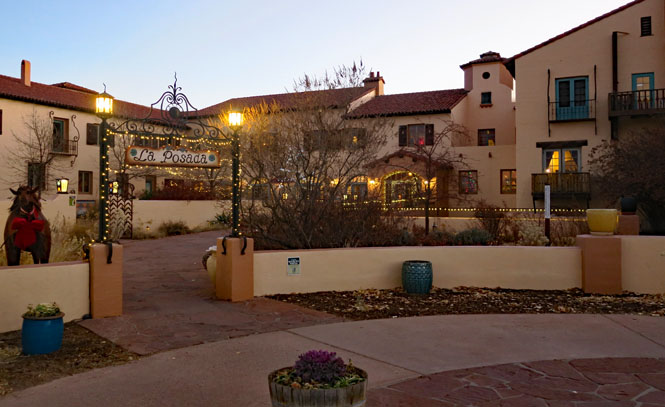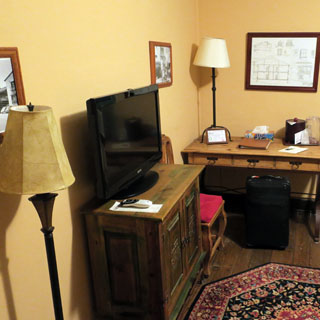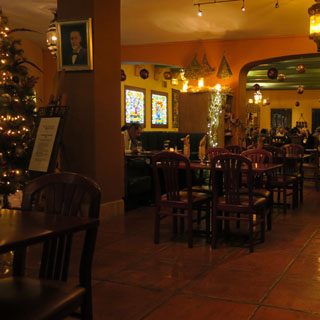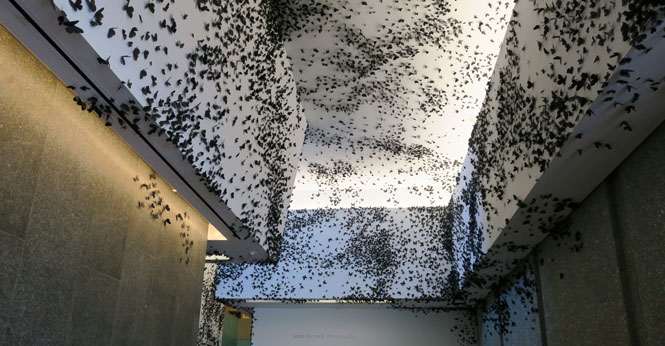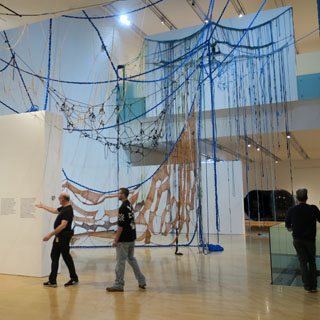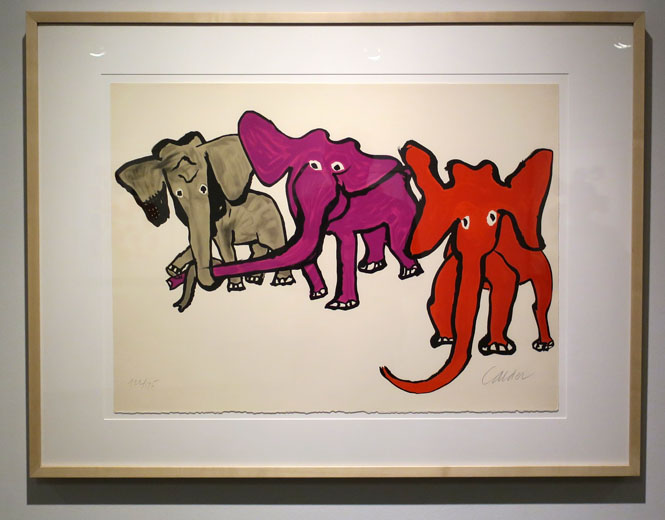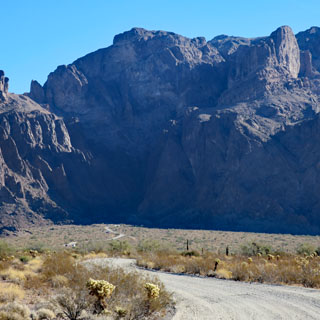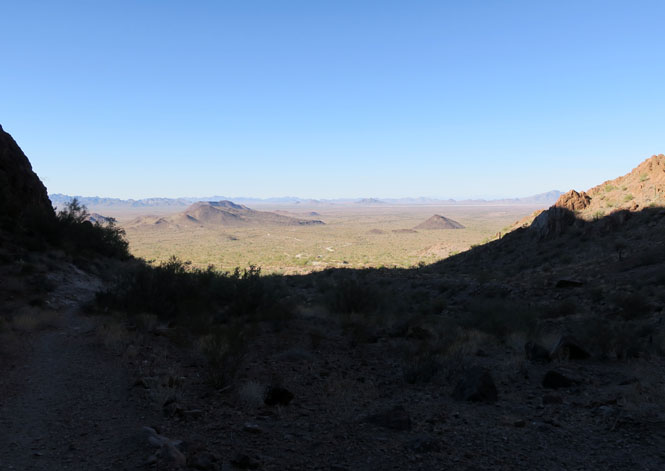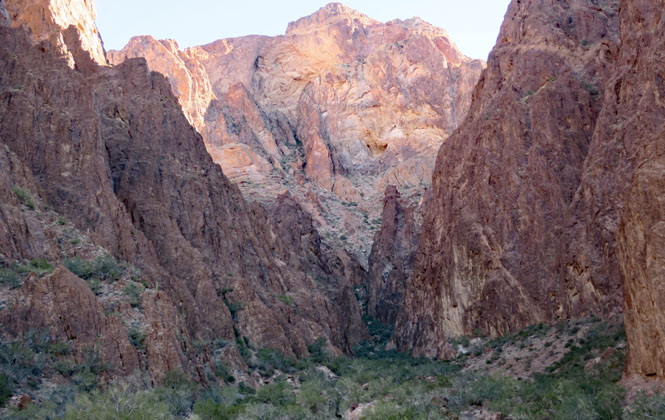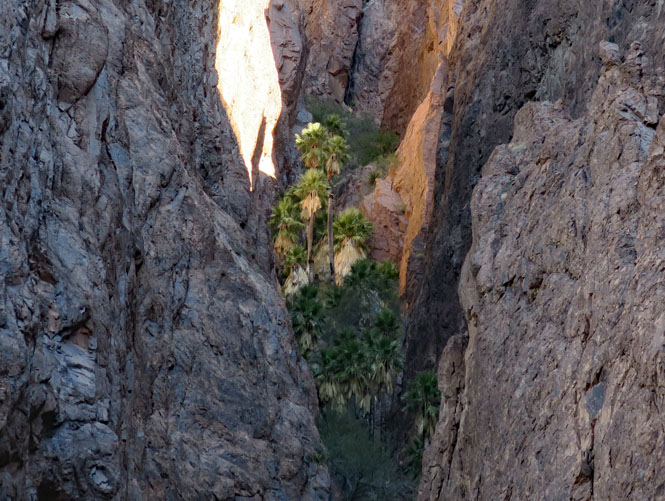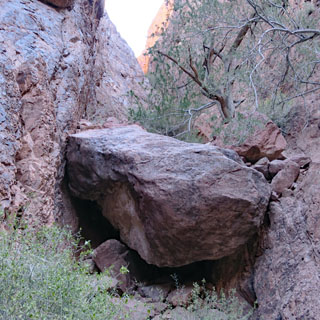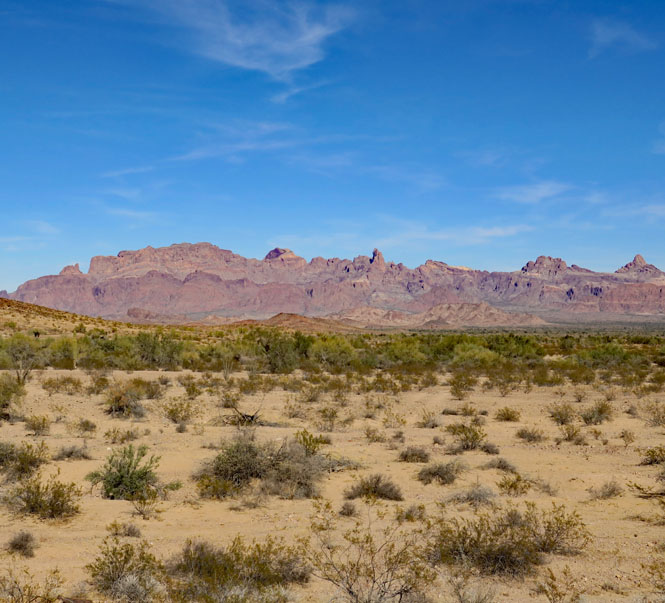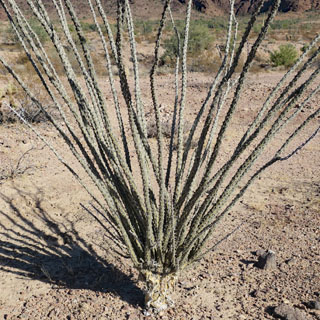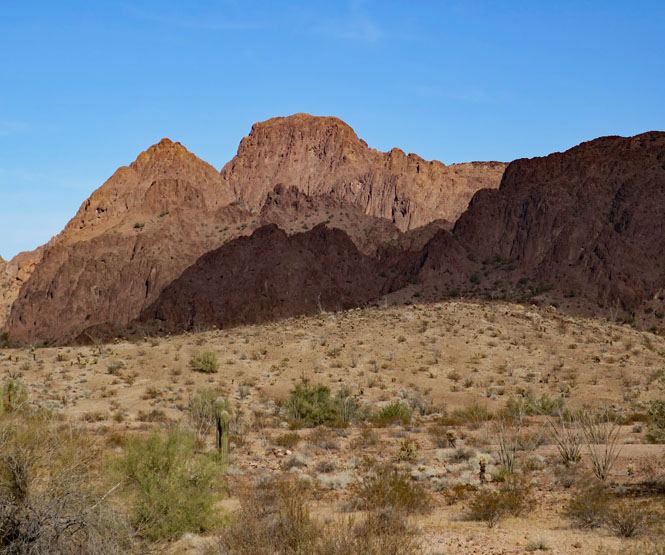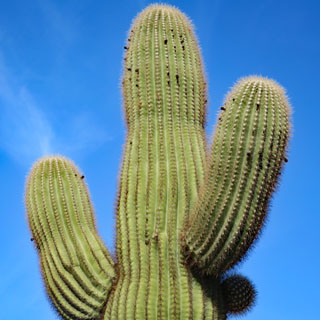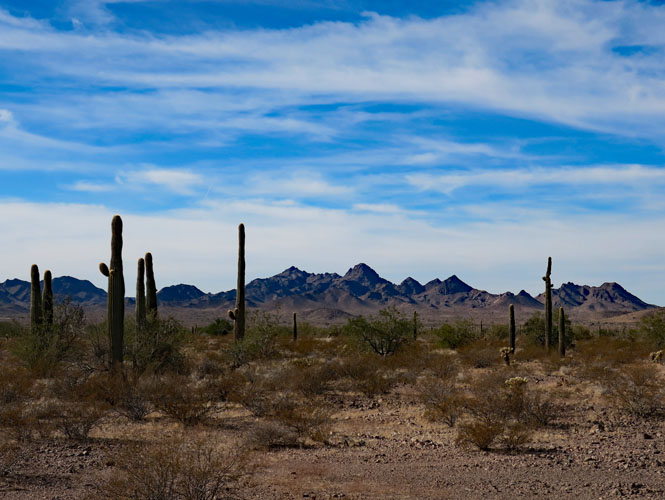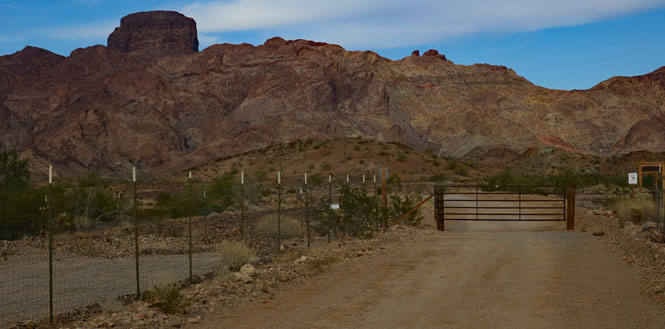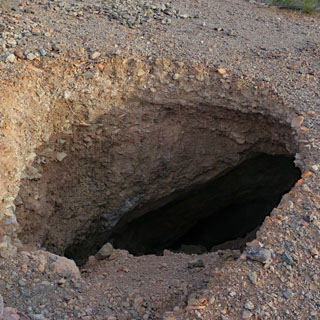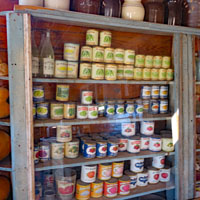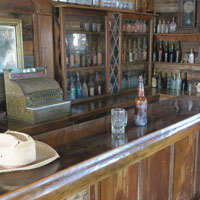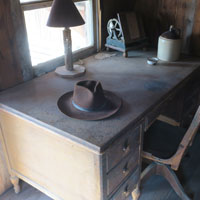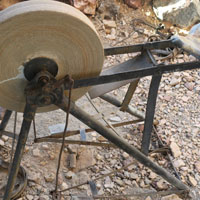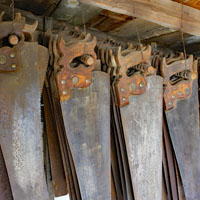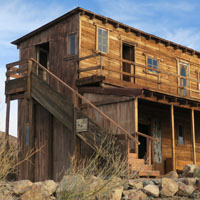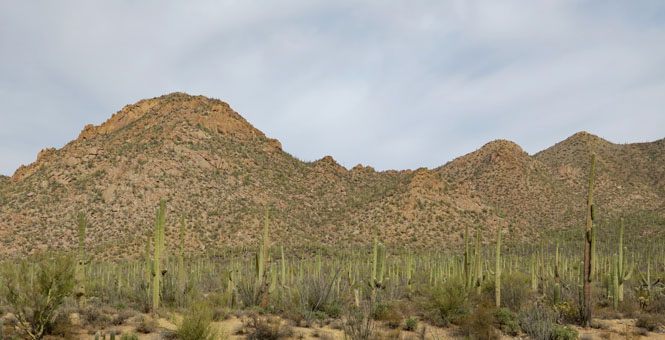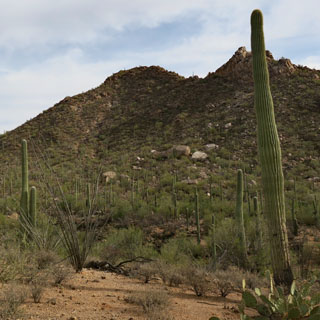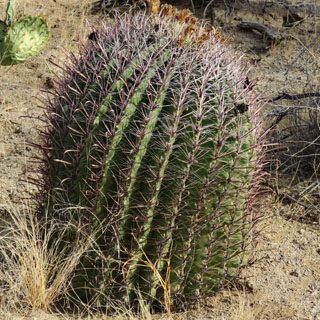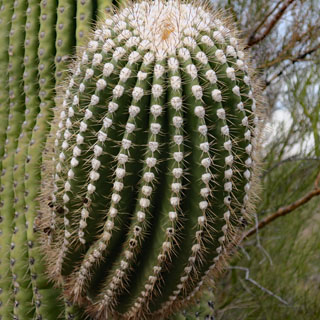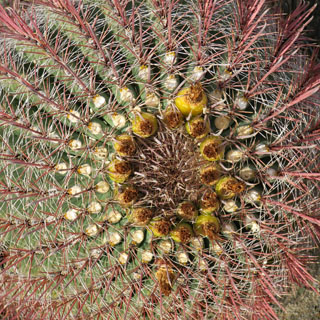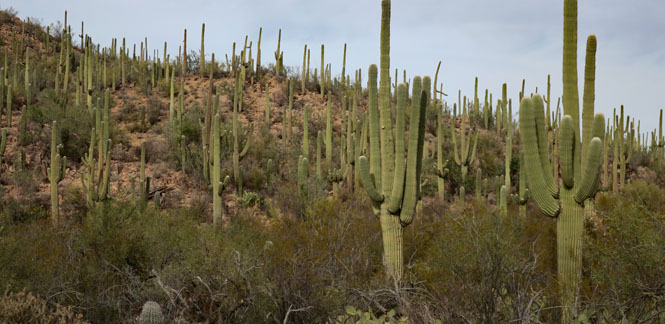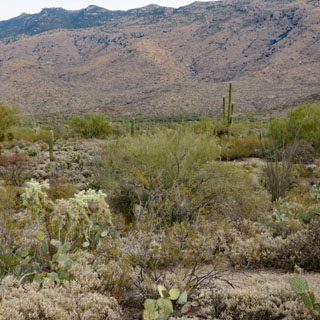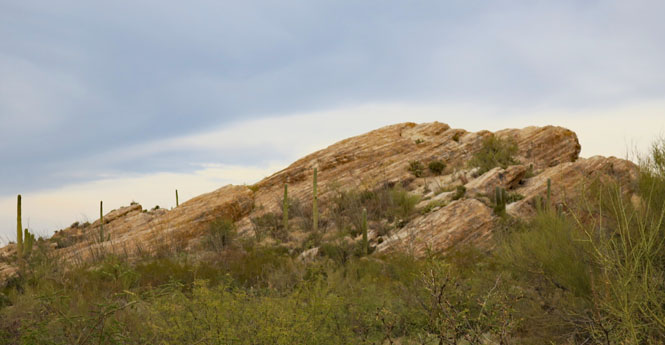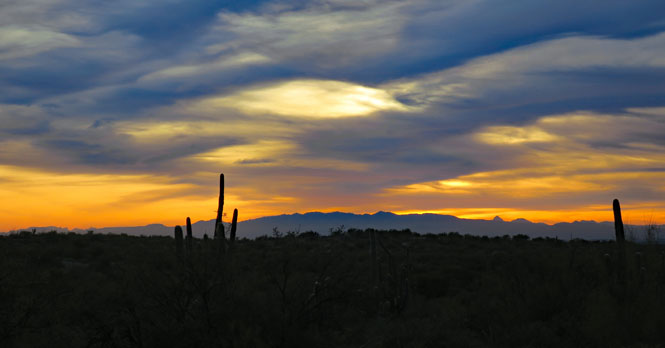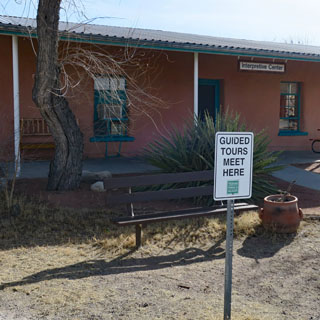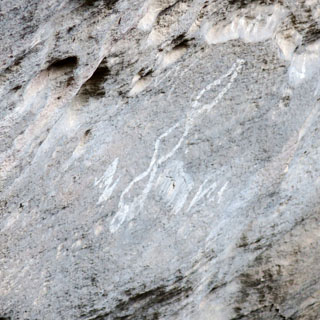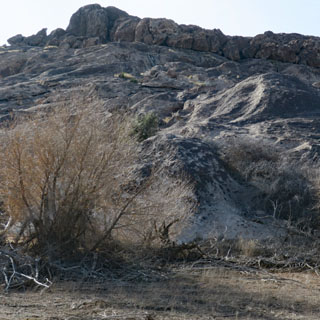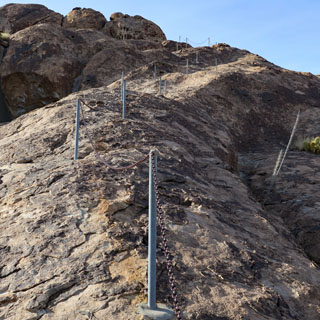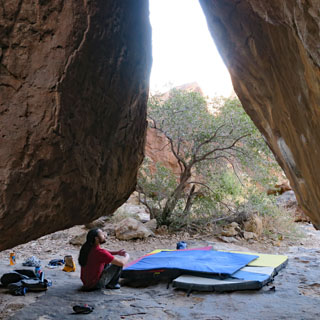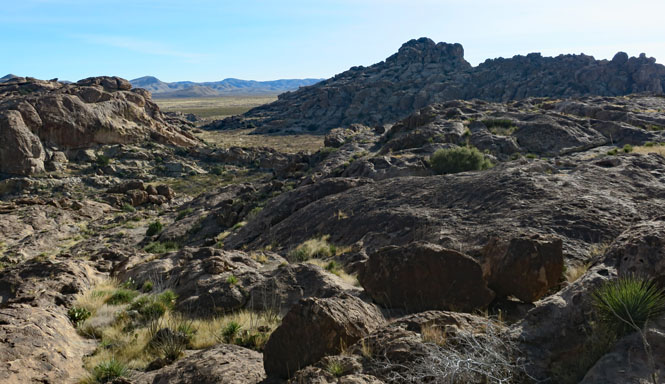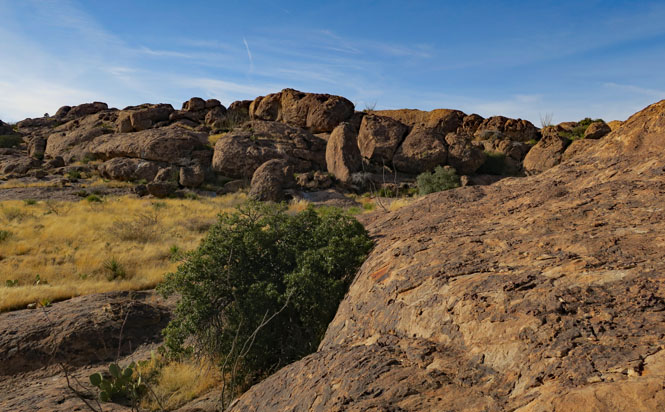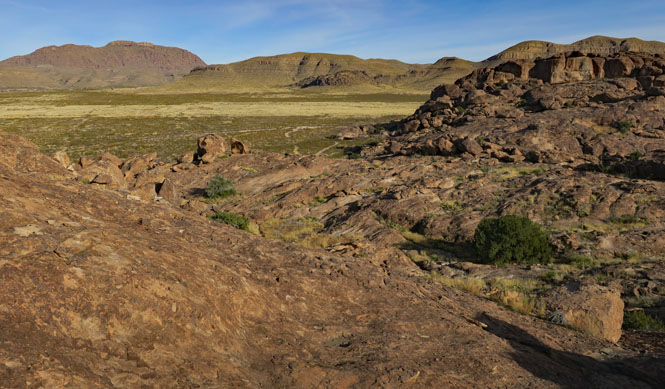December, 2017

My primary destination was the Kofa National Wildlife Refuge in western Arizona, but there are other things to see along the way.
 Arizona
Arizona
La Posada Hotel, Winslow. The Fred Harvey Company, working with the Santa Fe Railroad, built a number of elegant hotels and restaurants throughout the route. Perhaps the most famous of these is El Tovar along the south rim of the Grand Canyon. La Posada, in Winslow Arizona, was the most grand--said to be the last great railroad hotel built in America. The designer was Mary Colter, who oversaw all the details of this hotel.
We are lucky that today the hotel exists at all. It was under threat more than once to be torn down, and the fact that it is here today, is remarkable.
I've been in plenty of hotel rooms, but none had such a well-stocked bookcase as this one. The current owner has done a really fine job at bringing this hotel back.
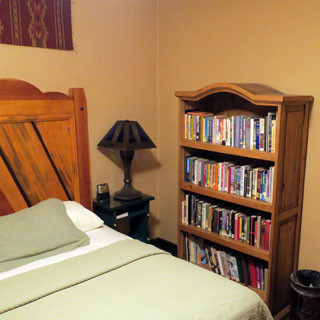
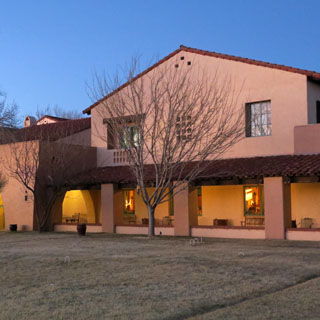
Each day Amtrak #3 and Amtrak #4 stop in front of the hotel on the way between Los Angeles and Chicago. There are plenty of freight trains to keep your attention.
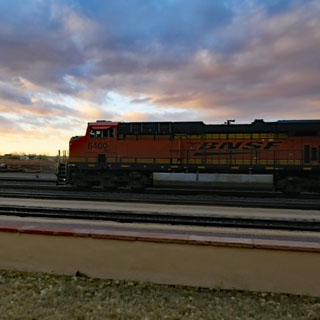
Breakfast the next morning in the hotel. The Turquoise Room must be regarded as being among the best restaurants in Arizona.

The Phoenix Art Museum. I'm passing through, so let's stop and look around.
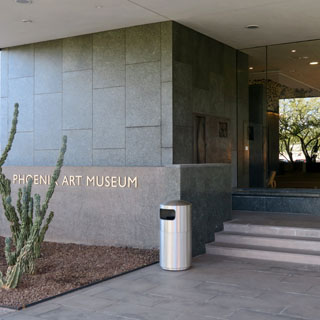
Ever wonder what 25,000 paper butterflies would look like?
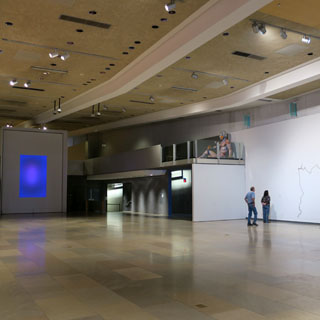
Pixels made from brown sugar.

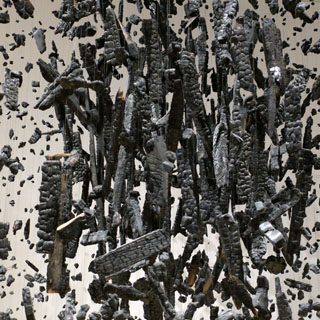
I think I liked this minor Alexander Calder piece the best.
Miniature details of once-existing European rooms--not the sort of thing that's done these days.
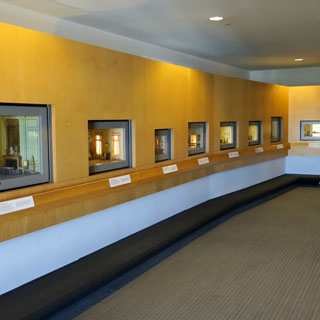
The refuge was created in 1939 to protect the desert bighorn sheep. I kept an eye out for them, but never did see a single sheep. But, the refuge is also home to the only native palm in Arizona and that's what I'm here to find.
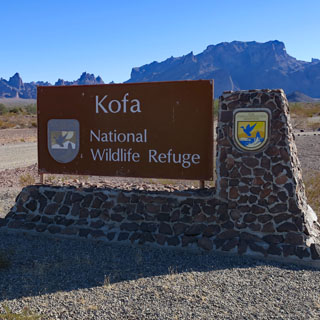
There are several miles of not-too-terrible road and then another couple of miles to hike into the narrow canyon.
This is the view looking back to the west. You cannot see it from here, but the Colorado River (and California) is just over the horizon.
Walking into the canyon.
The wall on the right. No palm trees here.
The wall on the left. There they are!
I made it about half way up but once I reached this large boulder and saw what the trail was going to be like, I decided to call it good.

Still inside the large refuge, this is the King Mine road.
One thing I noticed is how extraordinarily quiet it is. I didn't ride much, but kept the tradition of riding in each of the wildlife refuges I visit (or at least most of them).
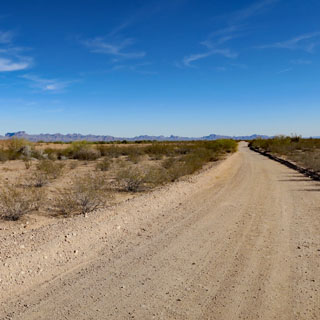
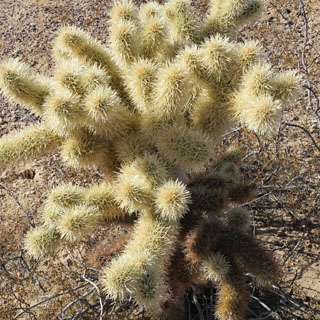
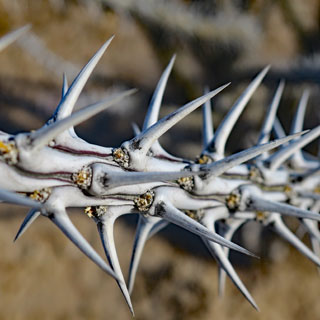
A classic Sonoran Desert scene.
Castle Dome Mine District museum is within the refuge, but on private land. Much of this land was once covered in silver mines. The old mine entrances are still out there--pay attention.
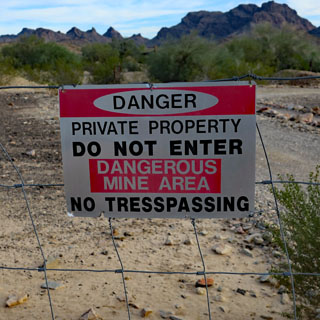
You'll be on several miles of pretty awful dirt road to get here.
Castle Dome City wasn't ever a real city (at least not as it appears here), but the museum creators have dragged in from the mining district many of the old houses, stores, hotels, shops and bunkhouses. They've done a really great job of it.
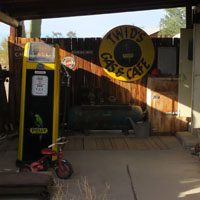

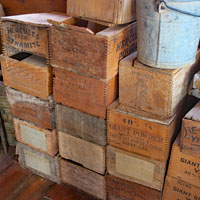
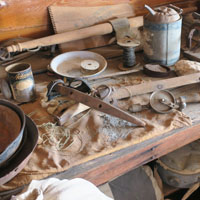
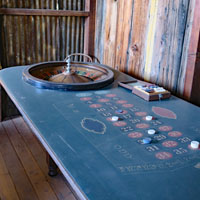
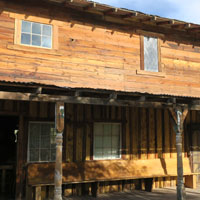

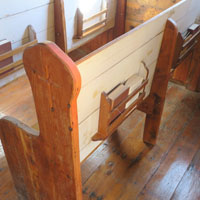

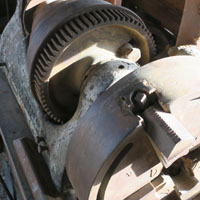

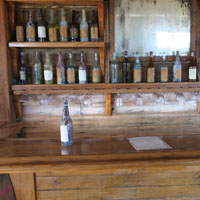
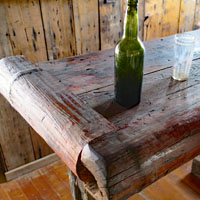
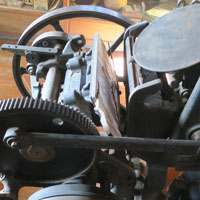


 Saguaro National Park was
created in 1994 from two national monuments that date back to 1933.
The two units of the park are on the west and east sides of Tucson. I
visited both units.
Saguaro National Park was
created in 1994 from two national monuments that date back to 1933.
The two units of the park are on the west and east sides of Tucson. I
visited both units.
The loop road of the west unit is unpaved and for that reason is perhaps more interesting than the shorter, paved loop road of the east unit.
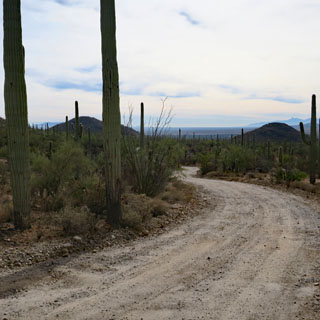
Winter is the perfect time to visit.
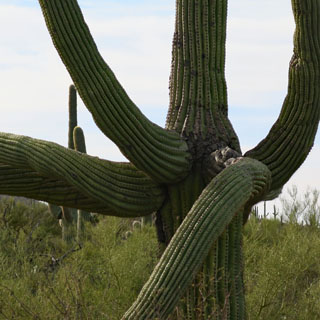
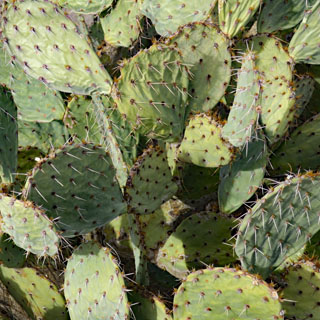
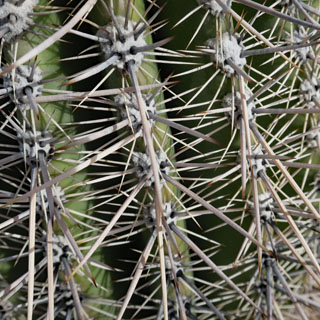
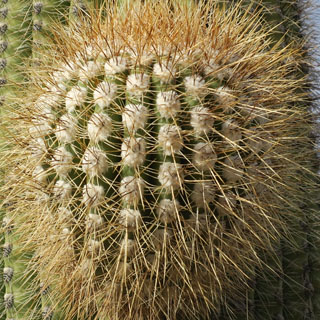
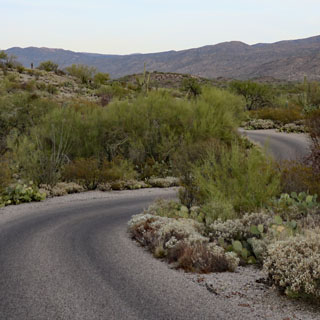
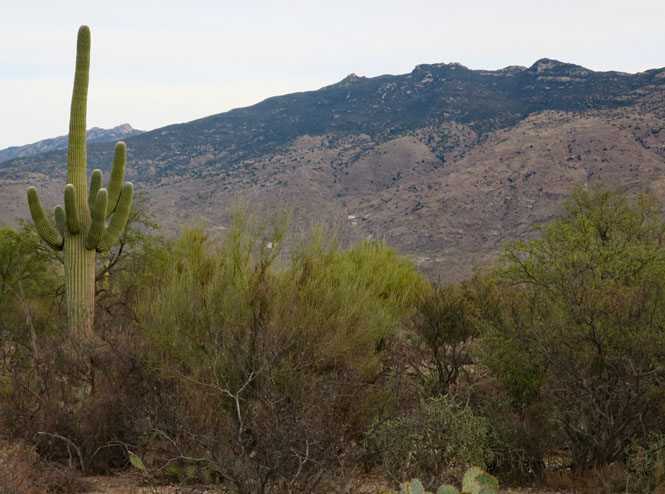
Looking west towards Tucson and the setting sun.
 Texas
Texas
 Hueco Tanks State Park
& Historic Site
Hueco Tanks State Park
& Historic Site
Hueco Tanks is a series of natural cisterns that have been important to people living in this region for some ten thousand years. The Butterfield Stage Line also stopped here as it had a reliable supply of water all the year. These rocks have the largest concentration of pre-history art in North America.
It's therefore a sensitive area and the check-in and check-out process as well as the required orientation is more involved than you might expect.
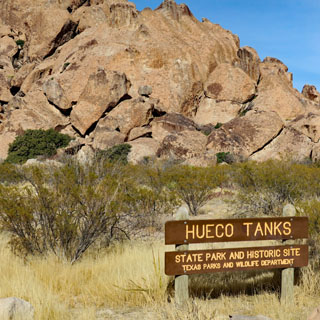
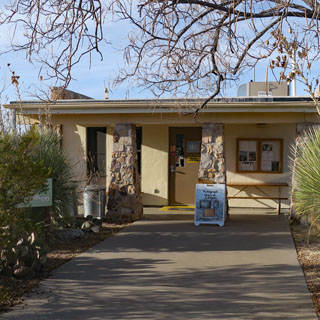
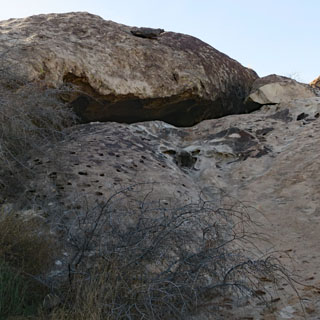
It looks like it might be easy to climb over these rocks. It's not.
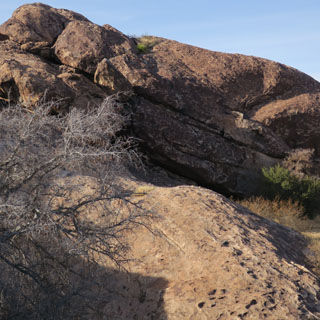

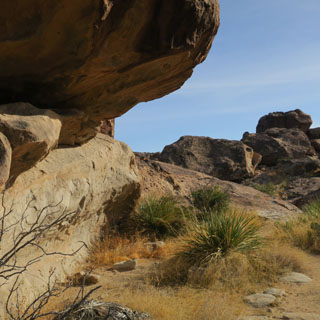
Rock climbers come from all over the country (and the world) to visit this spot. Evidently, most any technical challenge can be found here, so it makes an ideal center of training.


